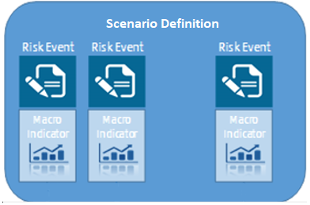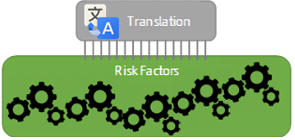Climate Risk materialization
It is well known that climate and its associated risks will impact our lives in several unpredictable ways in the future. Over the last decades, climate related disasters have seen a steady increase and the popular belief indicates that they will continue to do so.
Climate risk mainly materializes in two distinct forms:
- On the one hand there is the physical risk that captures the wide set of physical impacts that climate change brings about, such as increasing temperatures, sea level rise, increased frequency and severity of storms, drought, and so on.
- On the other hand, climate risk materializes into the transition risk that captures the impact from a range of behavioural, technological, and policy changes required in the transition to a low(er) carbon economy.
Though some of those physical risks are assumed to only materialize in the long-term, such as rising sea levels, some effects have already impacted the value of assets at present. For instance, such effects have been perceived for homes exposed to sea level rise, selling cheaper than similar unexposed homes. To put those findings into perspective with the financial industry, if placed as collateral, one should value the underlying asset with great caution to reflect risk profile of the location where the asset is located. With increased risk of wildfires, property insurance is becoming more expensive and, in some cases, harder to obtain at all.Profitability, and hence the sustainability, of the business model of certain sectors can get under pressure due to transition risk, as carbon-intense industries might face increasing taxes, penalties and obligations due to environmental regulation. Banks and capital markets will be progressively more reluctant in providing financing to sectors highly subjectable to transition risk.
Climate Risk Scenario Analysis

Scenario analysis in view of Climate Risks aids institutions to assess the impact climate change will have on their business strategy and long-term profitability.
When introducing Climate risk scenarios (ranging from optimistic to super severe), institutions need to consider several macro indicators such as monetary policy, temperature increases, carbon gas emissions, unemployment and so on. Specific for climate risk is also exposure to legal litigation triggered by insufficient action to mitigate carbon emissions and incompliance with environmental law and regulations.

These macro assumptions need to be translated to concrete Risk Drivers (such as PD rates, real estate collateral values, LGD, changes in correlations, interest rate curves, and so on), to allow impact quantification of the scenarios to the Key Performance Indicators of the financial institution.

Finally, the scenarios need to be technically translated to the modelling elements of the respective calculation engines in-place.

Climate risk scenarios typically require extra dimensions with regards to granularity of the scenario definition. Institutions will need to go deeper in sector, regional and legislative granularity to assess the transitional impact on a particular part of the portfolio. Some sectors will be more hit than others; the same goes for regional vulnerabilities.
What-if versus what-is
Since there are not (yet) historical data for climate risk stress scenarios, we see a fundamental shift to a forward-looking « what-if » approach. Nobody knows what the future holds. However, it is important to identify long-term sensitivities related to climate risk. As opposed to a backward-looking approach, where we just plug in actual numbers in the risk calculation formulas, institutions also need to forecast the inputs for the future.
The oak. Scenario Management Solution enables an integrated, centralized Scenario Definition cockpit, connecting to the (existing) calculation engines in the Risk architecture of the institution. In our view, the most important is that institutions can bring a consistent and entreprise-wide story for several climate risk stress scenarios. An integrated and consistent Scenario Management Framework enables institutions to bring scenario elements and calculations together for a very long time horizon, while also attributing different modelling elements and stress shocks to the scenario impacts.

